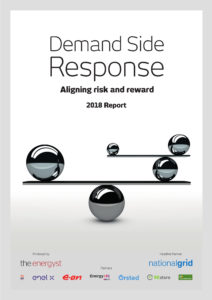Firm Frequency Response (FFR), traditionally one of the highest sources of value for fast responding assets, has seen price declines in recent years.
Interviewed for The Energyst’s 2017 DSR report, Eamonn Boland, senior manager at Baringa Partners, suggested FFR price erosion would mirror that of Short Term Operating Reserve, which has settled at around a quarter of the peak rates paid in 2010. He stands by that forecast.

“Our central view remains similar to previous predictions,” says Boland. “We have seen the price trajectory decreasing quite steadily.”
In 2015-16, prices for dynamic FFR stood around £22/MW/hr. In 2016-17, prices paid were between £15-£18/MW/hr. This summer, bids averaged around £12/MW/hr, with some bids well into single digits.
Competition
Boland says that is the result of new market entrants disrupting pricing. The knock-on effect is incumbent asset owners bidding more aggressively to ensure they win a contract. That creates further downward price pressure.
“It is not that we have a bearish view on FFR prices, the only thing we think about is supply and demand economics, and the market is capped, which naturally creates pricing tensions,” says Boland.
“Now we are potentially seeing quite large assets being built that do not yet have FFR contracts, which creates another threat to pricing.”

Tom Harper works alongside Boland at Baringa. He says while the FFR price trajectory over the next couple of years is downward, “the gradient is tricky to predict”.
“It requires assumptions on when people enter the market with larger non-contracted assets and also when the big assets step out.”
He uses pumped storage station Dinorwig as an example. “It may choose to stick in the market at lower prices, or it may chose to leave, which has a temporary blip on clearing prices for other technologies,” he says. “So there is some uncertainty in the next two to three years as to when we will hit the [price] floor.”
Balancing Mechanism
Given falling FFR prices, many market participants are looking to the Balancing Mechanism (BM) for income. But Boland believes “a bit of a correction may be required in terms of appreciation of [the BM] as an income stream”.
“[The BM] has had quite a lot of attention but I don’t think people appreciate the nature of firstly how they in practice access the BM and secondly what are the nature of those earnings,” he says. “It is the last residual tool in the market – historically upside for assets rather than banked business cases. It is not new, it has been in the market since day one and while the value of the BM has increased a bit, it is not by orders of magnitude.”
Boland says the Balancing Mechanism will certainly be a component income stream for many types of asset; “storage and engines and flex fit neatly into the BM’s requirement for short-term, fast response”.
But he says it is “challenging to see the BM being the primary income stream of assets of the future.”
 Eamonn Boland and Tom Harper were interviewed for the 2018 DSR report, which you can download free of charge, here.
Eamonn Boland and Tom Harper were interviewed for the 2018 DSR report, which you can download free of charge, here.
Tom Harper also presented at the DSR Event in London this month. You can download his slides here.
Related stories:
Battery storage to push FFR prices down Stor’s path?
National Grid to trial same day frequency response auction
National Grid outlines roadmap to bring all flex providers into Balancing Mechanism
Follow us at @EnergystMedia. For regular bulletins, sign up for the free newsletter.




From a ESO’s perspective they want to have the certainty that they have sufficient Generation and of a particular type to provide Frequency Response to cover all circumstances. Could potentially just tender for availability, You don’t tender for utilisation they just bid into the BM? Those paid utilisation fees have to submit BOAs. That way FR is accurately priced according to real time need. Other parties could still Bid in via the BM to provide it. Trouble is, receiving a utilisation payment means you can’t then participate in other Balancing Services so you’d want some certainty that you’d get dispatched. Questions start to be asked about whether the role of the SO is as a Residual Balancer, with the Market receiving appropriate transparent price signals to Balance Energy.
Questions then arise about Gate closure, duration of a settlement period, the affect of Non BM Generation spilling. Arrrgghhhh!!
Moving forward, should it be prosumers who are the ones that balance the market?
I’m not sure the market is moving in the direction of revenue certainty. Tricky one for Investment like the article says. However the CM price may clear higher to price in the revenue uncertainty which some argue may not be a bad thing.